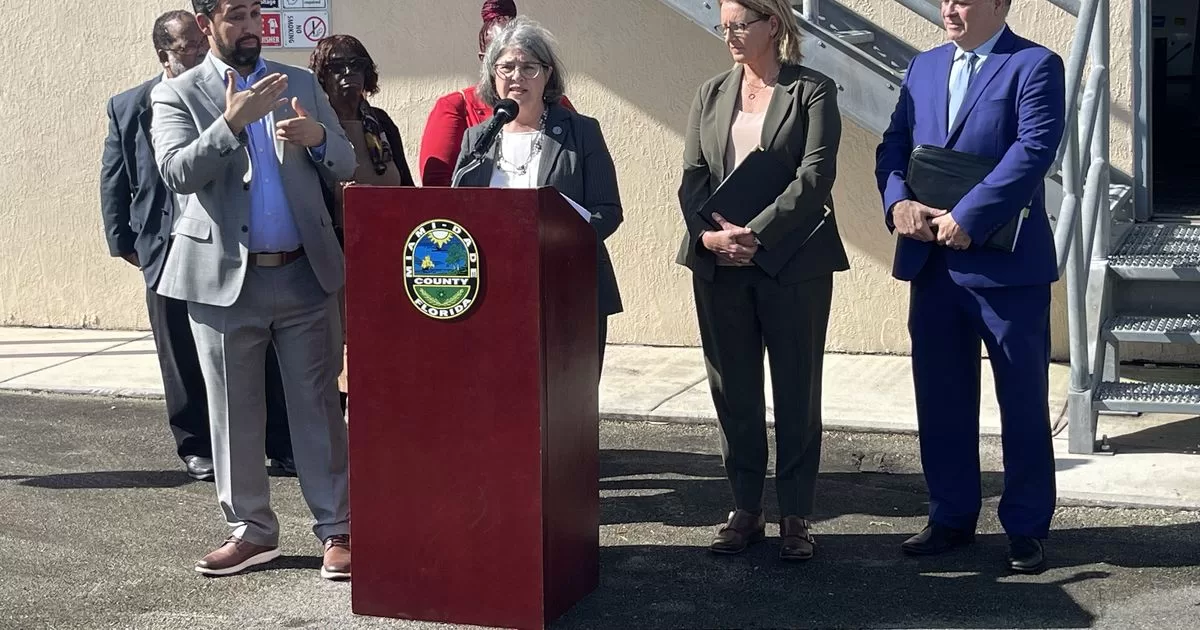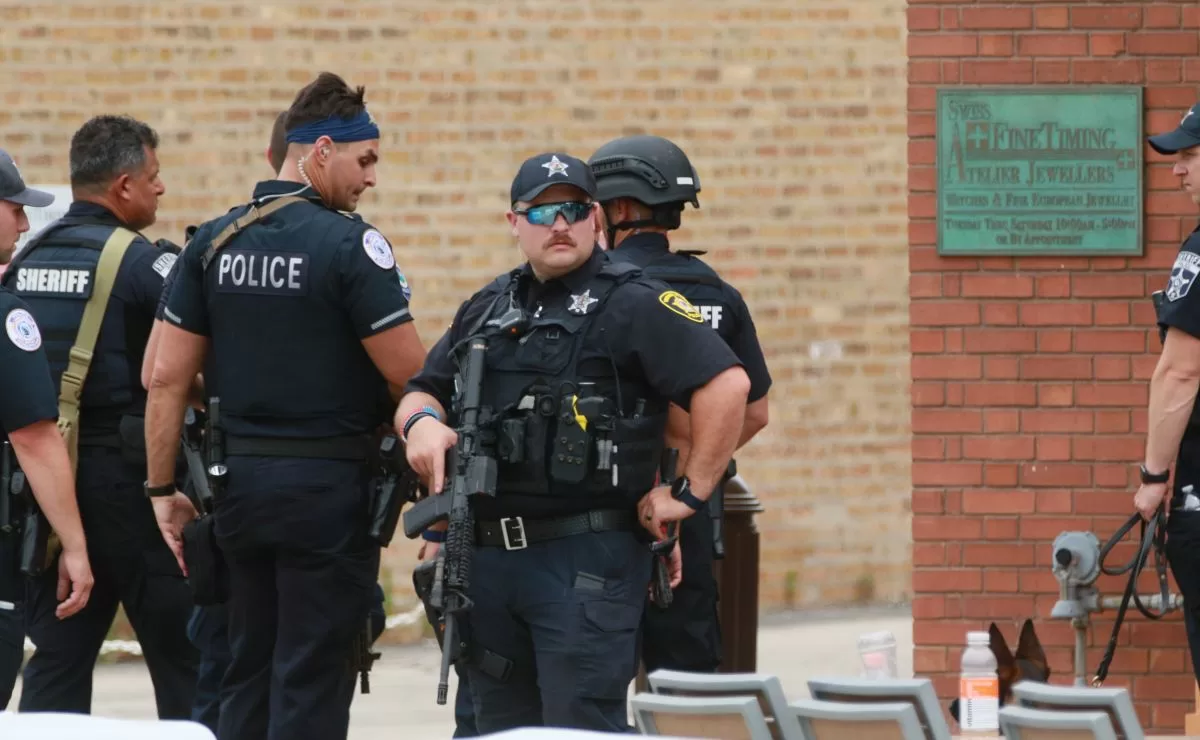One month he carries the body of a Russian soldier half a dozen meters from a 120-millimeter mortar from the Ukrainian army. One month he leads a group of men from the 35th Marine Brigade in these same positions south of the Donetsk region and at the gates of Zaporizhia. His insistence has been rewarded with the release of Staromayorske this Thursday, two days after the special envoy of EL PAÍS accompanied them on the front. kyiv had not been able to regain control of enclaves in this area for weeks.
The decomposed smell of the enemy, despite the feast of the cloud of flies that flutters over the remains, is not the most uncomfortable in a place where hardly a minute goes by without an explosion from entering or leaving the air. Lying on the ground next to his helmet, dressed in his uniform and bulletproof vest, he does not pose any danger compared to the intense activity, in the form of artillery ammunition and missiles, exerted by his colleagues from the positions they were trying to defend a little. further south, in Staromayorske.
President Volodímir Zelenski celebrated the recovery of that enclave by sharing on his social networks the video of the first soldiers who, national flag in hand, retook control. The Deputy Defense Minister, Hanna Maliar, also reported this. On the ground, this more than immobile Russian body does not worry the head of the mortar unit, Maxim (no one offers his last name). Neither did his subordinates. “It is not our job to deal with them. We don’t have orders from the commanders to do anything with those bodies… ”, he affirms under the thick network of branches that forms a long row of trees and that serves as a parapet.
“We have to respect the enemy. The enemy is learning, ”says Maxim, 25, sitting on a box of ammunition. He thus justifies the complications to overcome the Russian wall. A couple of meters away, an improvised powder magazine with dozens of mortar shells. “The situation is difficult on all fronts, but we are working slowly and calmly. Victory will come soon, ”he says, following the path of official statements and without revealing strategic data that is considered secret or hinting that they are about to liberate a new town, Staromayorske.
Join EL PAÍS to follow all the news and read without limits.
subscribe
The main short-term objective, says Maxim, is to “drive the Russians out of the tree lines” which they also use as a fortress and “where they have dug very good trenches.” In the same way, they must be thrown out of the populations that they continue to occupy and where they have dug tunnels that allow them to move underground from one building to another, he adds.
Without offering details, Zelenski already celebrated on Wednesday in his daily speech “very good results” in the counteroffensive, which local troops have been carrying out since the beginning of June in an attempt to liberate territory invaded by the Russians. The members of the 35th brigade participated from the beginning in this great military operation and, in those first days, managed to liberate towns south of Velika Novosilka such as Storozheve or Mararivka from occupation. But that impulse stopped then at the gates of Staromayorske.
The Ukrainian army has been clashing all this time with the huge array of enemy troops. The Russians have forged an extensive network of defenses and trenches of hundreds of kilometers that they support with the activity of their combat planes, their kamikaze drones and, above all, the deadly fields of anti-personnel and anti-tank mines. Beyond conquests such as that of Staromayorske, except for a great collapse of the Kremlin military in its current positions, the local advance is expected to continue to be long and painful, as it is despite the fact that Kiev does not offer figures for deaths, injuries or missing.
Maxim and his men are still a hundred kilometers in a straight line from Mariupol, a large city on the Azov Sea, one of the main targets of the counteroffensive. The Ukrainians have dozens of points ahead of them, such as Staromayorske, between huge plains that make progress difficult, since when attacking they are very exposed to Russian defensive positions. Tree lines form almost the only shields that nature provides in the open country. Many of these specimens have combat wounds. They are half scorched, they are missing branches or, directly, they have succumbed.
At the foot of the ground, between the holes left by the logs, there are ditches, trenches and holes that serve as protection for the soldiers. “When we talk about urban warfare, even in small towns, you can look for protection behind the walls, in the buildings, but here what you can dig up is what there is for protection,” says Maxim, referring to these characteristics of the flat terrain. and almost always open, which ends up playing against him.
“This is my luxury apartment,” comments Andrei, 22, ironically, as he shows the hole where only his body can barely fit. He uses it to protect himself during bombardments with match bombs or cluster munitions. He claims that he already had it done when he got to this position and that all he’s had to do is “make it a little better”. As he speaks, the hiss of shells coming from Russian positions or passing over the line of trees is constant. Some of the members of the 35th brigade, when the sound is threateningly close, take advantage of the fraction of two or three seconds to drop to the ground just in case. Others are unfazed.
“They attack us many times a day” with artillery and aviation, confirms a young soldier nicknamed Chechen. He is 22 years old, is originally from the city of Odesa and is the father of a daughter. “They fire at us non-stop, especially when they see a tank or an armored personnel carrier. This confirms that they have a lot of artillery here, ”he concludes. Chechen believes that behind the persistence of the Russians there is an economic motivation. “I think they do it for money. Those who fight are poor”, he comments, based on the testimonies collected from some captured prisoners of war who “say they are only here for money”. The soldier adds that some of those who are arrested are because their companions have abandoned them and “they have no other option but to turn themselves in.”
The person in charge of the unit does not hide that, on a personal level, the hardest thing is to be away from the family. In fact, he says that the last time he saw his wife was last month and because he was wounded by shrapnel on the left side.
The roads that lead to this front are dotted with the odd war landmark destroyed in the battle, such as a tank, an armored vehicle that looks like a Ukrainian-made Kosak model, or a troop transport vehicle. The devastation and loneliness are evident from Velika Novosilka south, through small towns like Vremivka, which did not fall into Russian hands, but for months were the dividing line between the two armies. Even today the detonations are constant, as the Ukrainians continue to have positions around this town that is home to only 14 people, less than 1% of the 1,500 inhabitants it had before the war.
The couple formed by Sergi Boichenko, 56, and Alla Pohrebniak, 52, celebrate that the combat planes that now fly over their heads are Ukrainian and not Russian. They appreciate the visit with all the hospitality that the few means at their disposal allow. As soon as they show the grad missile that fell in their garden last year and is still there without detonating, they give them a taste of the exquisite homemade sliced bread they prepare. Next to the door, United Nations tarpaulins to cover the damage to the roofs and wood to cover the windows without glass. They will be indispensable when winter hits them mercilessly again. That will be another battle, that of the cold in these small towns without water, gas or electricity.
His neighbor Viktor Pobrehniak, 55, remembers the days when he collaborated with the military by showing them the roads. “I saw the dead, the wounded… War is war, but now that we have pushed them back I am dedicated to repairing roofs”, he comments in front of the house of some acquaintances who, like the vast majority, are still far from Vremivka. A puff of thick white smoke comes out of his mouth as he inhales the cigarette that he has just rolled with the only piece of paper he has, a newspaper.
Further along the road, following in the footsteps of the troops heading for the counteroffensive, is Neskuchne, liberated from the Russians in June. A monument to the Second World War, whose plaque looks half off, welcomes you in what has become a paradise where wild nature reigns. Destruction has taken over everything in the middle of the trail left by the invaders in the form of the letter Z painted on the walls and the gates of some houses. On the ground, jumbles of what were cars, embedded mortar shells without exploding and even a half-scorched anti-tank mine on the shoulder without actually exploding. The only living thing that crosses the road in this town, currently an uninhabitable hell, is a cat.
Follow all the international information on Facebook and Twitteror in our weekly newsletter.
Subscribe to continue reading
Read without limits





